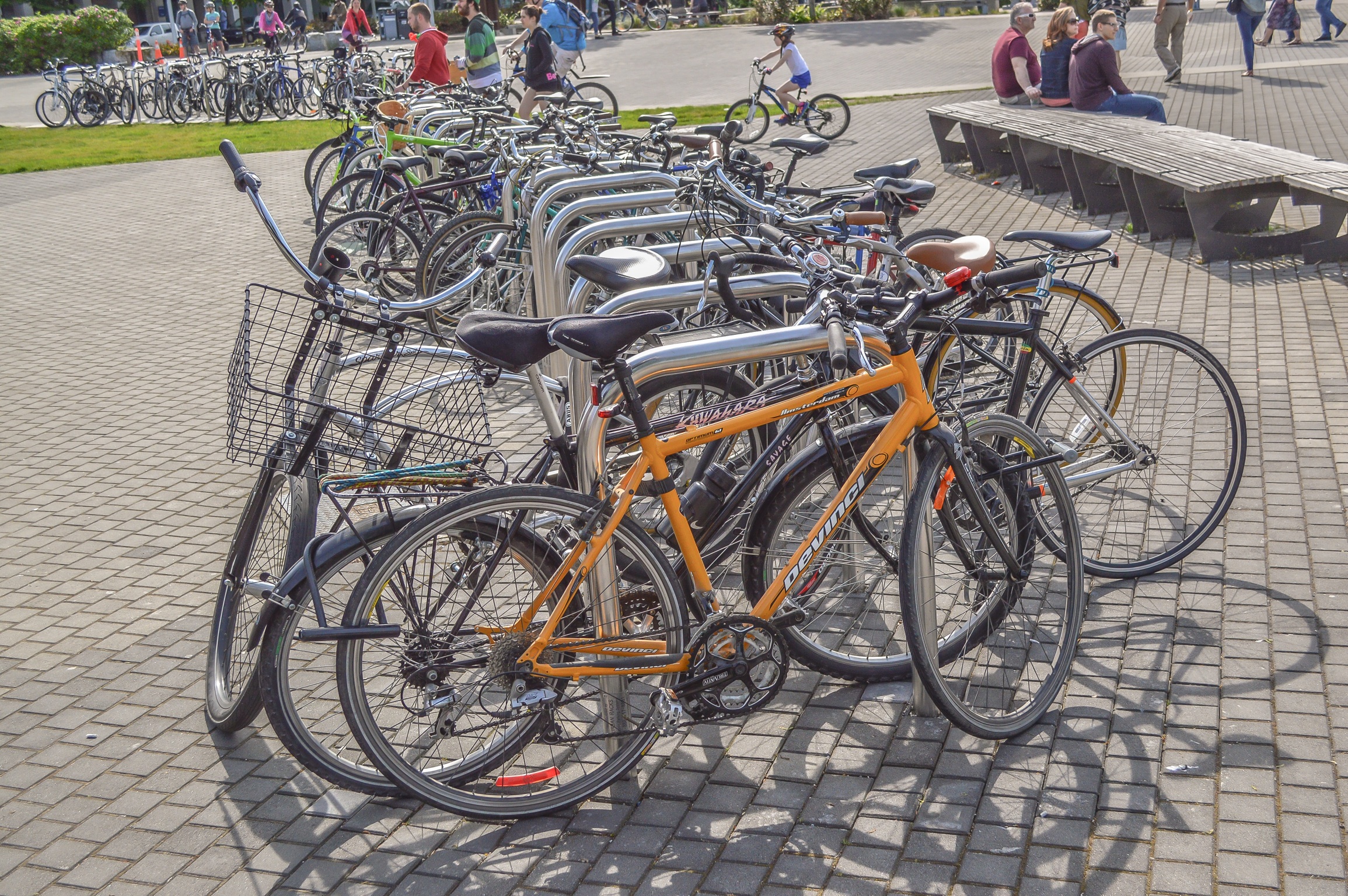Post-pope visit in Philly (with too much media hubbub to boot), I can’t think of a better time to celebrate Flying Kite Media and their very relevant ‘On the Ground Campaign’, which officially got a big reboot earlier this year. The Campaign is a ‘take the news to the people’ effort that focuses on hyper local news both from and about neighbourhoods that typically don’t make headlines. No pope allowed!
The Olympic Village: Vancouver’s Newest Neighbourhood
By guest contributor, Chris Bruntlett.
Image courtesy of Chris Bruntlett.
Of the many legacies to emerge from Vancouver’s hosting of the 2010 Winter Games, the Olympic Village was easily the most unpredictable and uncertain. When their primary investor bailed during the financial crisis of 2008, the municipal government was forced to step in with hundreds of millions of dollars; unsure as to whether they would see a full return on their investment, with over half of the units unsold at the time of the games. However, the past four years have seen the Village go from ghost town to a bustling hive of activity; a transformation that has been the product of smart design, careful planning, long-term vision, and a little bit of luck.
Situated at the foot of False Creek, just steps away from the downtown peninsula and Mount Pleasant neighbourhood, the single biggest contributing factor to this project's success has been its prime location. A rehabilitated industrial area (which was mostly parking lot), the site boasts unparalleled views of the Pacific Ocean and North Shore Mountains, and now provides everything one could need within a few blocks: shops, cafés, restaurants, plazas, parks, a community centre, and a daycare.
Image courtesy of Chris Bruntlett.
Proximity and location have also made the Village an inadvertent transportation hub. It is served by two separate Skytrain lines, including the Canada Line that extends to the airport. This is another valued Olympic legacy, far outpacing ridership projections made during construction. Two water taxi services have docks there, connecting to dozens of locations around the inlet, while the adjacent seawall provides miles of comfortable walking and cycling. And three different car-sharing schemes offer vehicles for residents (or visitors) who might need access to one.
In a city where quality public space is at a premium, the Village has delivered in spades. The main plaza – flanked on three sides by residential balconies above shop fronts and patios – has provided a remarkably social place for people to gather and interact. As with most successful social urban spaces, the devil is in the details, with playground-like features and public art for children, and a variety of built-in seating for the adults. It has become a much-loved destination for my own children, who will climb, tumble, and play with the other kids for hours, given the chance.
Image courtesy of Chris Bruntlett.
Somehow, the Village has also become ground zero for Vancouver’s emerging bicycle culture. Found at the point where several bikeways converge to the waterfront (and 30-kilometres of glorious seawall cycling), it has established itself as an incredibly popular pre-, mid-, or post-ride meeting point; as well as my own favourite spot to grab a coffee, find a bench, and photograph passing stylish cyclists for Vancouver Cycle Chic. Amazingly, the demand for bike parking always seems to exceed the supply, keeping city staff busy with the task of installing new bike racks.
Just last month, the city officials announced they had sold all of the remaining units, and recovered every cent used to bailout the Olympic Village project. Now that the dust has settled, and it becomes an integral part of every Vancouverite's existence (I live 4.5-kilometres to the east, and somehow manage to visit a half dozen times per week), it is becoming difficult to imagine life without it. In a sense, the Village has embodied our transition into a more healthy, social, and sustainable 21st century city; and hopefully, it inspires city builders around the world to replicate its success.
Image courtesy of Chris Bruntlett.
Chris Bruntlett is a Residential Designer and father of two, living the (car-free) East Van dream. Outside of the office, he diligently documents the rise of mainstream bicycle culture via words, photographs, and film. He cherishes the ability to live and work in a dense, vibrant, sustainable city, and contribute to that vision on a daily basis. You can find Chris on Twitter: @cbruntlett



